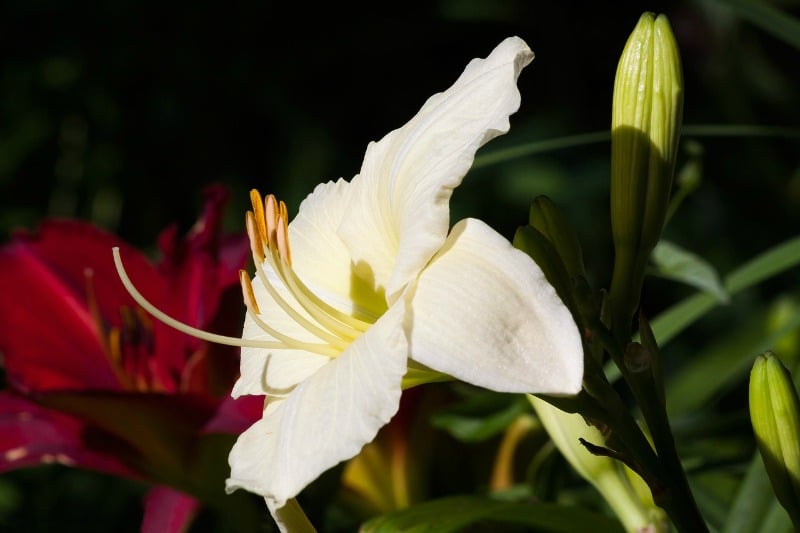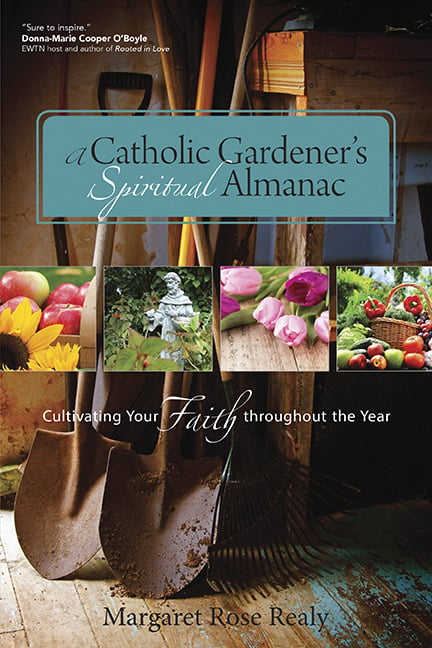 Via
Pixabay (2016), CC0 Public Domain
Via
Pixabay (2016), CC0 Public Domain
The Solemnity of the Assumption of the Blessed Virgin Mary on August 15 commemorates her death and bodily assumption into eternal life. This took place before her physical body could begin to decay.
But did you know that Mary’s tomb was not found empty? In 451 A.D. it was noted by St. Juvenal, Bishop of Jerusalem, at the Council of Chalcedon that the apostle, St. Thomas, was said to have found beautiful roses and lilies where her body once lay.
There are several white daylilies that bloom near this date, and together are known as Assumption Lilies. The late summer blooming varieties to add to your Marian garden are:
Hemerocallis ‘Serene Madonna’
Hemerocallis ‘Heavenly White Lightening’
Hemerocallis ‘Jolly White Giant’
Hemerocallis ‘Lady Elizabeth’
Daylilies are one of the easiest plants to grow and maintain, and will grow in most soils, though they prefer those high in organic matter. These are sturdy perennials and adapt to most any garden. They tolerate a wide range of soil and light conditions, establish themselves quickly, and survive harsh winters. For more information on how to grow these lovely plants, visit the University of Minnesota web site.
The name Hemerocallis is composed of two Greek words, hemera meaning day and kallos meaning beauty. The name is appropriate since each flower lasts only one day, though some of the newer cultivars can last 24 hours—opening in the evening. Each stalk of flowers contains multiple buds developing throughout their specific bloom period. They are not a true lily from the genus Lileaceae, which are the single-stemmed Oriental and Asiatic lilies.
This holy feast day is also associated with celebrating the summer’s harvest. The Roman Ritual includes the Assumption Day Blessing of Produce, of fields, gardens, and orchards. It is a beautiful prayer ritual; the whole of it can be found here. There is also a wonderful tradition on this day of giving baskets of fruits and herbs to friends. In this way we can imitate Mother Mary by bringing comfort to others.

For more fun gardening insights for your liturgical gardens, read A Catholic Gardener's Spiritual Almanac, available from Ave Maria Press.
Copyright 2015, 2017 Margaret Rose Realy, Obl. OSB
About the Author

Margaret Rose Realy, Obl. OSB
Margaret Rose Realy, Obl. OSB lives an eremitic life and authored A Garden Catechism, A Catholic Gardener’s Spiritual Almanac, A Garden of Visible Prayer: Creating a Personal Sacred Space One Step at a Time, and Cultivating God’s Garden through Lent. An award-winning author, Margaret has a master’s degree in communications, is a Certified Greenhouse Grower, Master Gardener, liturgical garden consultant, and workshop/retreat leader.


.png?width=1806&height=731&name=CatholicMom_hcfm_logo1_pos_871c_2728c%20(002).png)
Comments